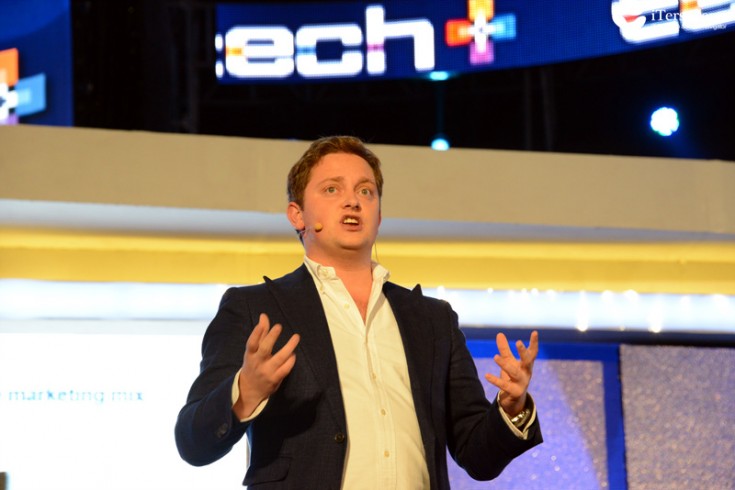(iTers News) – Augmented reality, or AR is where real, physical world and virtual world meet.
Using a built-in camera of mobile devices like smartphones and tablet PCs, the AR technology allows smartphone users to scan real objects in the physical world to search information about them on the Internet and then see unlimited shapes and sizes of symbols, icons, pictures, texts, even moving video images of virtual world.
The working theory is straightforward.

The app will recognize it and superimpose the information they are looking for on the product.
As is the case, applications are huge ranging from mobile commerce to e-retailing to military to e-publishing to entertainment to advertisement to location-based services.
Google is even trying to commercialize a wearable AR glass to enable glass wearers to see virtual maps, drawings, other images.

He is head of global marketing of Aurasma, too.
During his demo, he scanned a portrait of Robert Burns, a Scottish poet of the 17th century, with his iPhone, which is connected to a projector on a table, and the Aurasma app on his iPhone worked a magic putting the deceased Roberts Burns to virtual life projecting his virtual moving image launching into a speech of some verses of his poem on a big screen behind.

He also pointed his iPhone at a morning newspaper picture and brought up related video clips on his phone screen, or a big screen TV.
3D AR is also available, too. “For the first time, we are able to process a 3 D model,” added he.
Using his app, he pointed his iPhone at a poster depicting a dinosaur, may be Tyrannosaurus, and again brought him screaming back to life, projecting a virtual image of his slamming his way onto a big screen.
Animation of global phenomenon Korean singer Psy was also called up to a TV screen to dance Gangnam Style together Matt Mills

According to market research firm Juniper Research, augmented reality applications are expected to generate about US$300 million in global revenues, as a growing list of businesses sees the technology as a key enabler of consumer engagement.
To turn the potential into real sales, Qualcomm and IBM are aggressively working on their respective AR solution.
IBM researchers in Haifa Israel works on a test project with some unnamed U.S. retailers to commercialize its prototype app. IBM’s scenario is let shoppers download the app in-store at the start of their shopping, or beforehand and specify what they are looking for.
Photos & Videos by JH. Bae

